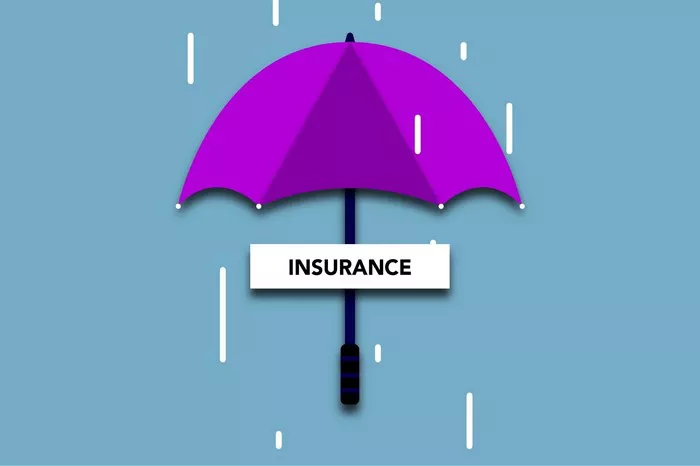Long-term disability insurance is a critical financial tool designed to provide income replacement and support for individuals who are unable to work due to a disabling injury or illness. This form of insurance serves multiple purposes, addressing both immediate and long-term financial needs for the insured and their families. Below, we will delve into the detailed introduction, the logic behind long-term disability insurance, its importance, and how it operates within the financial industry.
Detailed Introduction to Long-Term Disability Insurance
Long-term disability insurance (LTD) is a type of insurance that provides a stream of income to individuals who suffer from a disabling injury or illness that prevents them from working for an extended period. This insurance is distinct from short-term disability insurance, which typically covers a person for a few months. LTD is designed to provide coverage for a longer duration, often ranging from two to five years, or even until retirement age, depending on the policy.
The purpose of LTD is to bridge the financial gap that arises when an individual’s primary source of income is disrupted due to a disability. Unlike some other forms of insurance, such as life insurance, which pays out after death, LTD provides financial support while the insured is still alive but unable to work.
Logical Coherence and Purposes of Long-Term Disability Insurance
Understanding the purpose of LTD requires a logical examination of its various facets, including why it is needed, how it works, and its broader implications for individuals and society.
1. Income Replacement and Financial Security
The primary purpose of LTD is to replace lost income. For many people, their job is the primary source of income, funding daily living expenses, debt repayments, savings, and future plans. A disabling injury or illness can abruptly disrupt this income stream, leading to significant financial stress.
LTD provides a monthly benefit that can help cover essential expenses. This includes mortgage or rent payments, groceries, utilities, medical bills, and other necessary costs. Without this financial support, many individuals would face the risk of bankruptcy, eviction, or other financial crises.
Moreover, LTD can help maintain financial stability for families. If the breadwinner becomes disabled, the entire household’s financial situation can be jeopardized. LTD ensures that families can continue to meet their financial obligations, providing a sense of security and reducing stress.
2. Protection Against the Unexpected
Life is unpredictable. While many people plan for the future, few can accurately foresee a disabling injury or illness. LTD serves as a safety net, protecting against unforeseen circumstances that can dramatically alter one’s financial situation.
Accidents, illnesses, and injuries can happen to anyone, regardless of age, gender, occupation, or lifestyle. LTD provides peace of mind, allowing individuals to focus on recovery without worrying about how they will pay their bills.
Furthermore, LTD can be particularly crucial for high-income earners. High-income individuals often have significant financial obligations and responsibilities. A disabling injury or illness could have a disproportionate impact on their finances, making LTD an essential component of their financial planning.
3. Supporting Medical Recovery
A disabling injury or illness often requires extensive medical treatment and rehabilitation. LTD can help fund these medical expenses, ensuring that individuals have access to the necessary care.
Medical costs can be significant, including hospital stays, surgeries, medications, therapies, and ongoing medical management. LTD benefits can be used to cover these costs, reducing the financial burden and allowing individuals to focus on their recovery.
Moreover, LTD can support individuals as they transition back to work. Recovery from a disabling injury or illness can be a gradual process. LTD provides financial support during this time, allowing individuals to take the necessary steps to return to work, such as attending rehabilitation programs, vocational training, or gradual reintegration into their job.
4. Preserving Savings and Investments
LTD helps preserve savings and investments by providing a source of income that can be used to cover essential expenses. Without LTD, individuals might be forced to dip into their savings or investments to meet financial obligations.
Depleting savings can have long-term financial consequences. It can affect retirement planning, emergency funds, and other financial goals. LTD ensures that savings and investments remain intact, providing a financial cushion for the future.
5. Supporting the Disabled Community
LTD serves a broader social purpose by supporting the disabled community. Disabled individuals often face significant challenges in accessing employment and financial stability. LTD provides a financial lifeline, helping disabled individuals maintain their independence and dignity.
Moreover, LTD can help reduce the financial strain on government programs. Without LTD, disabled individuals might rely more heavily on government assistance, such as Social Security Disability Insurance (SSDI). LTD can offset some of this burden, freeing up resources for other critical government programs.
6. Enhancing Employee Benefits Packages
LTD is often included in comprehensive employee benefits packages. Employers offer LTD as a way to attract and retain top talent, demonstrating their commitment to employee well-being.
A strong employee benefits package can be a significant factor in job satisfaction and loyalty. LTD is a valuable component of this package, providing financial security for employees and their families. It also shows that the employer cares about their employees’ long-term financial health and well-being.
How Long-Term Disability Insurance Works
Understanding the mechanics of LTD is essential to appreciating its purpose and value. LTD policies typically work as follows:
1. Enrollment and Eligibility
Employees can enroll in LTD through their employer’s benefits package or purchase individual policies. Eligibility requirements vary by policy, but generally, individuals must be actively working and meet certain health criteria.
2. Waiting Period
LTD policies often have a waiting period, known as the elimination period, before benefits begin. This period can range from a few weeks to several months, depending on the policy.
3. Benefit Period
Once the waiting period is over, LTD benefits begin and continue for a specified duration, often ranging from two to five years or until retirement age. The benefit amount is typically a percentage of the insured’s pre-disability income.
4. Definition of Disability
LTD policies vary in their definition of disability. Some policies require that the insured be unable to perform the duties of their specific job, while others use a broader definition, such as being unable to perform any job for which they are suited by education, training, or experience.
5. Claim Process
If an insured becomes disabled, they must file a claim with the insurance company. This typically involves providing medical documentation and other required information. The insurance company will review the claim and determine eligibility for benefits.
6. Benefit Payment
Once approved, LTD benefits are paid out in regular installments, such as monthly payments. These payments are tax-free if received through an employer-sponsored plan.
The Role of Long-Term Disability Insurance in the Financial Industry
LTD plays a crucial role in the financial industry, addressing the financial risks associated with disability. Here are some key ways LTD contributes to the financial industry:
1. Risk Mitigation
LTD is a form of risk mitigation, helping individuals and families manage the financial risks associated with disability. By providing income replacement, LTD reduces the potential for financial ruin, allowing individuals to maintain their financial stability and well-being.
2. Product Diversification
LTD is a valuable addition to financial product offerings. Insurance companies and financial advisors can diversify their product lines by offering LTD, meeting the diverse needs of their clients.
3. Employee Retention
LTD is an important tool for employee retention. Employers can offer LTD as a benefit to attract and retain top talent, demonstrating their commitment to employee well-being and financial security.
4. Economic Impact
LTD has broader economic implications. By providing financial support to disabled individuals, LTD helps maintain economic activity and productivity. Disabled individuals can continue to contribute to the economy, even if they are unable to work in their previous occupation.
5. Regulatory Compliance
LTD is subject to various regulatory requirements, ensuring that it operates within a fair and transparent framework. Financial industry regulators oversee LTD policies, ensuring that they provide adequate coverage and protecting consumers from unfair practices.
Conclusion
Long-term disability insurance serves a critical purpose in providing financial security and support for individuals who are unable to work due to a disabling injury or illness. By replacing lost income, supporting medical recovery, preserving savings and investments, and supporting the disabled community, LTD addresses both immediate and long-term financial needs.
LTD operates within the financial industry, contributing to risk mitigation, product diversification, employee retention, economic impact, and regulatory compliance. Understanding the purpose and mechanics of LTD is essential for individuals, families, employers, and financial professionals.
In today’s unpredictable world, LTD is a valuable financial tool that should be considered by anyone concerned about the financial consequences of a disabling injury or illness. By preparing for the unexpected, individuals can maintain their financial stability, reduce stress, and focus on recovery and well-being.
In summary, long-term disability insurance is a crucial component of financial planning, providing peace of mind and financial security for those facing a disabling injury or illness. Its importance cannot be overstated, as it addresses a significant financial risk that can dramatically alter one’s life. By understanding its purpose and mechanics, individuals can make informed decisions about their financial future, ensuring that they are prepared for whatever life may bring.
Related topics:





























